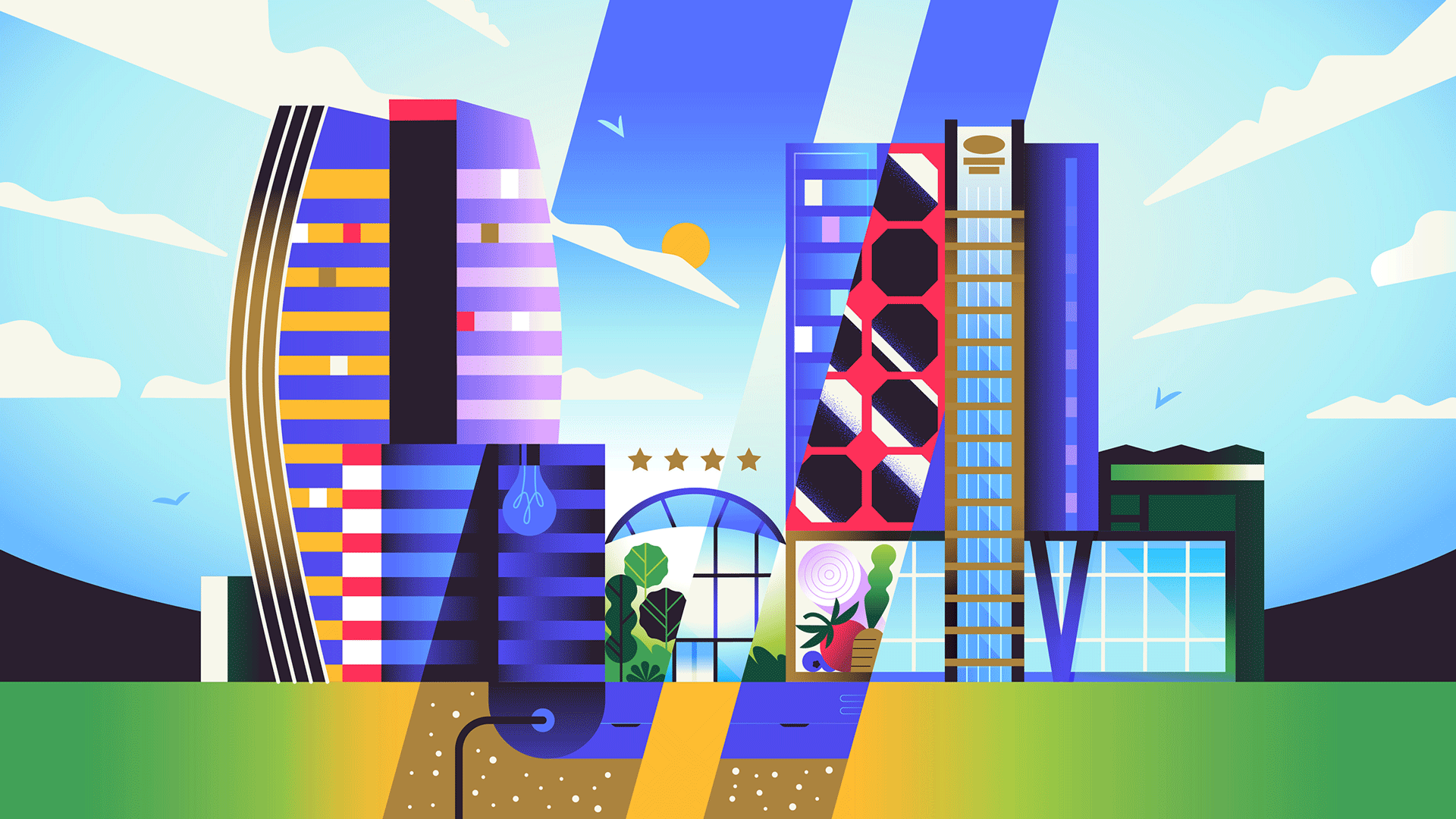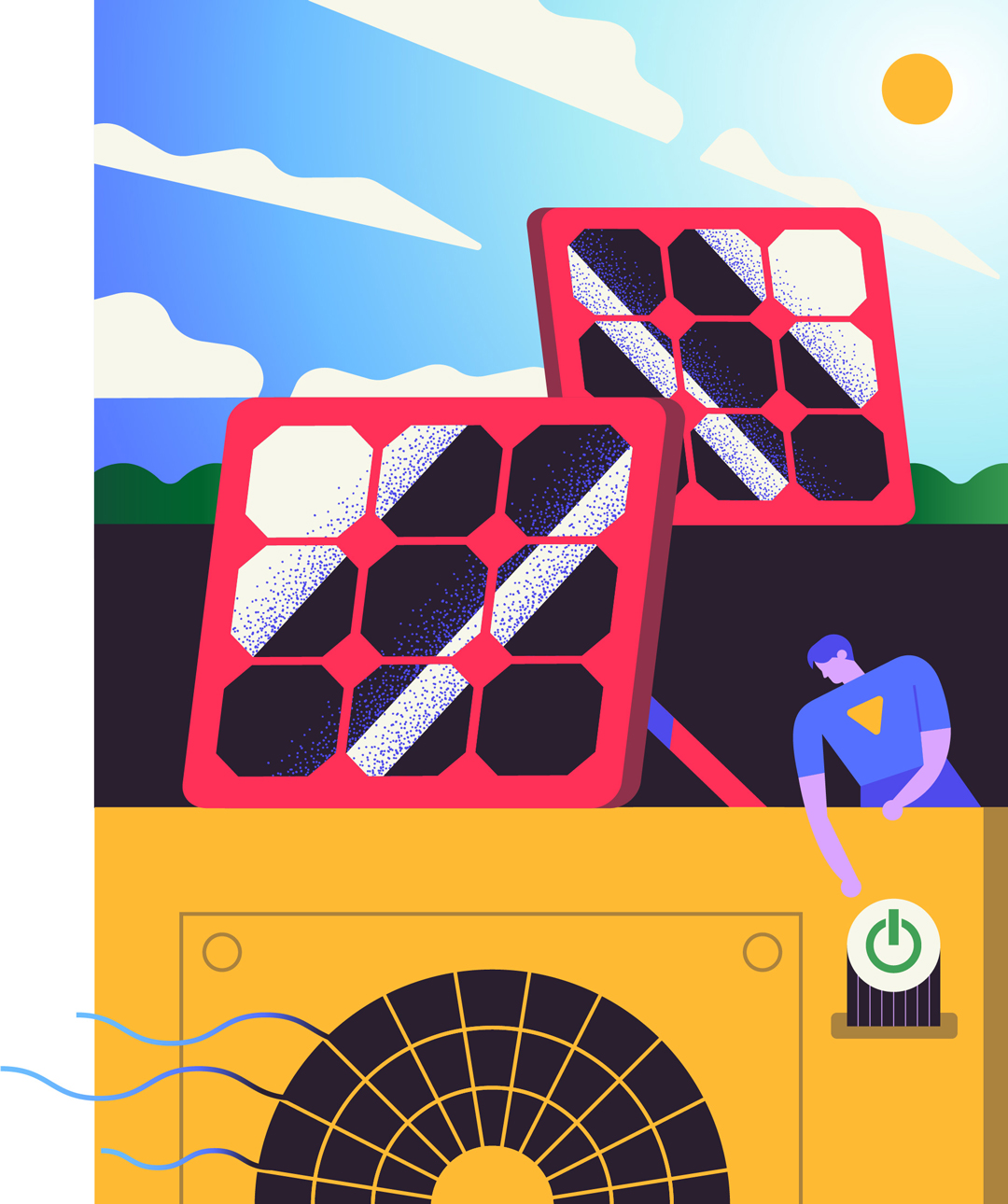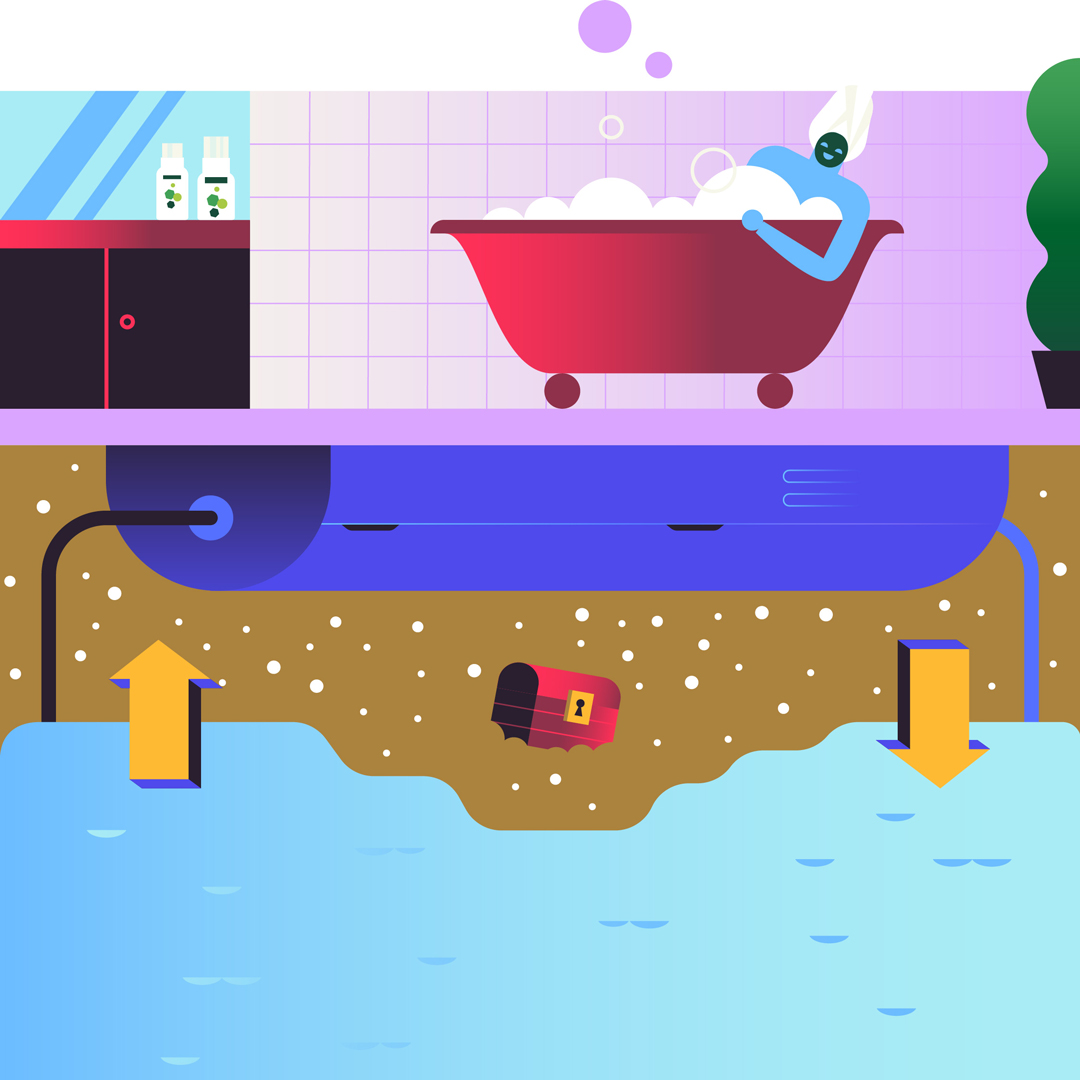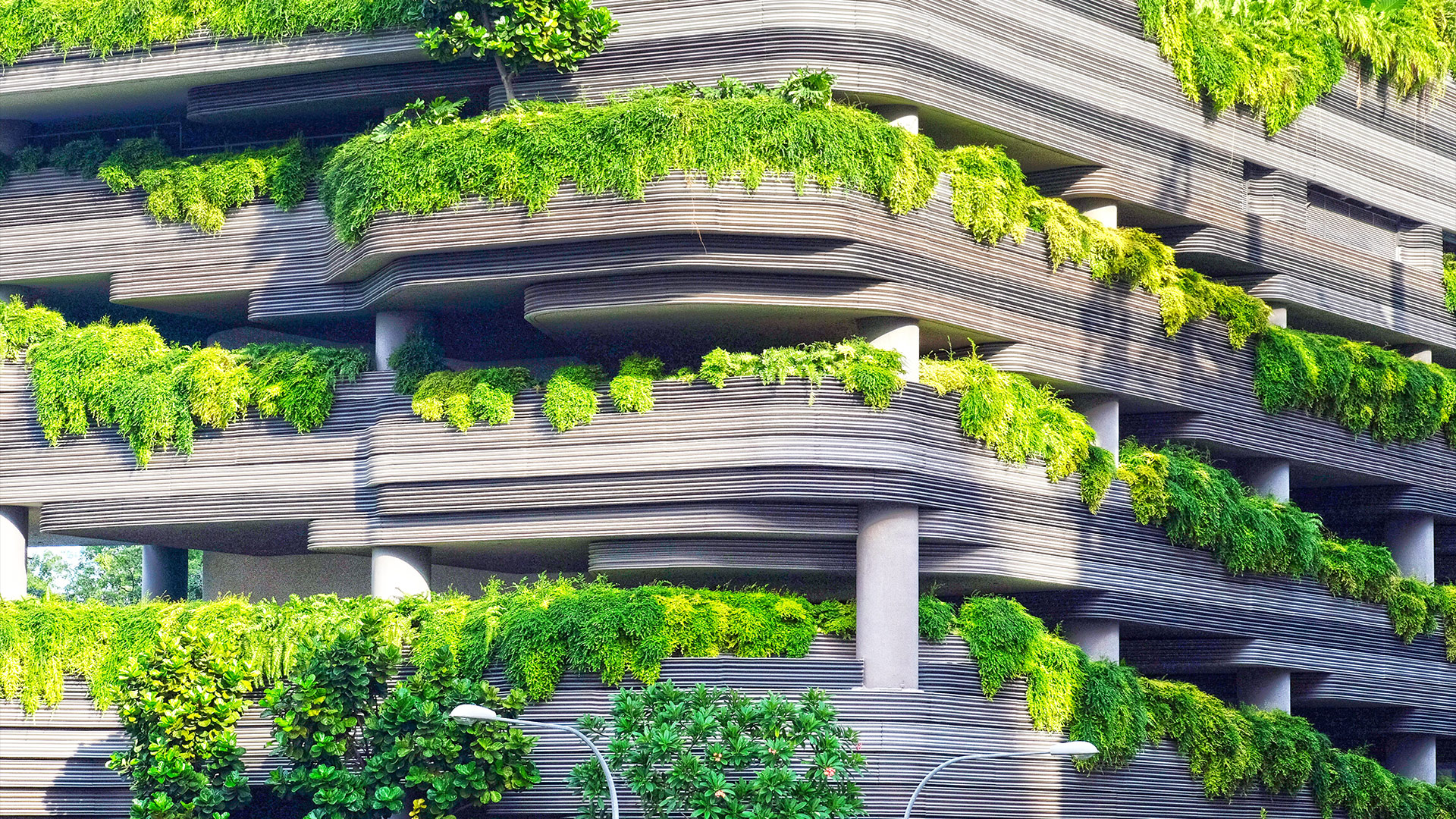
Illustration by Lorena G
The Crowne Plaza Copenhagen Towers is a super sustainable hotel on the outskirts of Denmark’s capital city, used by business travellers and tourists. Designed to LEED Platinum standards, it opened in 2009 and won the EcoTourism Award in 2010 for being the world’s greenest hotel in its first full year of operating.
As Denmark’s first carbon neutral hotel, it uses 65% less energy than hotels of comparable size and is contributing to Copenhagen’s goal of becoming the world’s first carbon neutral capital city by 2025.
Here’s a forensic look at what makes this one of the most environmentally friendly hotels in the world.

Tree-filled atrium
The main entrance to the hotel is a 1,400m2 tree-filled atrium that connects the hotel with the adjacent office building. The glass roof helps provide the ideal climate for the trees all year round and gives guests the experience of natural greenery even during the cold Danish winter.
The building’s interiors use local materials such as reused timber wall cladding, flooring made from recycled rubber and concrete building debris. Some ceilings are partly made from PET plastic felt, created from recycled plastic bottles.
In May 2018, the atrium’s architects, Lendager Group, received a Danish Design Award for the upcycled interior.

Smart lights
Low-energy lights are installed throughout the hotel and an intelligent light-management system controls them in corridors, only switching them on when sound or movement is detected. Guest rooms have LED reading lamps.

Solar panels
The building façades facing south, east and west are covered with 2,400m2 of solar panels, making it the biggest solar installation on a building in northern Europe. The panels generate 200,000 kWh of power each year and provide around 15% of the energy needed by the hotel.
Photos of the hotel’s exterior and atrium

Zero waste management
The hotel’s café, restaurant and catering services are working towards a goal of zero food waste in a number of ways:
1. Food donations – Leftovers from large events can be given to organisations tackling homelessness
2. Food collection app – TooGoodToGo connects unused food to users
3. Biogas – Leftovers are converted into biogas and fertilisers, reducing the use of artificial fertilisers in agriculture
4. Composting
The hotel is also working with its waste management supplier to analyse data on where waste is generated and where it goes. All food is measured to avoid overproduction.

Aquifer thermal energy storage
An aquifer thermal energy storage (ATES) system is located underground in the basement. Cold groundwater is used for cooling the guest rooms during the summer. No refrigeration is required while the groundwater is pumped through the hotel’s hydronic air conditioning system. By reversing the flow, the warm groundwater is also available for heating during the winter season.
The buildings of the hotel also have triple glazing and extra thick thermal insulation to keep out the cold during winter.

